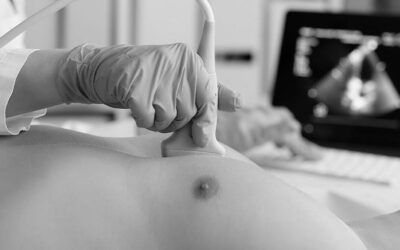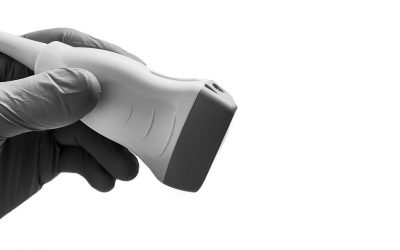The data are unequivocal and indicate that we are heading towards an overall more elderly population. With a life expectancy in Europe of around 81.3 years and a reduction in the number of births, in the coming years, the population aged over 65 will have an important weight at a social and health level.
In this article, we will see what the impact of elderly patients is on hospitals and how peripheral vascular access can be managed when such patients require intravenous treatment.
-
Aging of the hospital population
The greatest challenge that the health system is facing is that with time, getting old’s sense is getting closer to staying alive for a long time, rather than to getting old.
In fact, WHO defines active aging as follows: “The process of optimizing opportunities for health, participation and safety in order to improve the quality of life as people age.”
Scientific research and the application of evidence to health practice traditionally had the main objective of reducing mortality. Now, they pay equal attention to the quality of life of patients, especially in the stages of greater fragility.
In the 2000s, the OECD already noted that older people accounted for the largest increase in hospital admissions. The current evolution follows the same trend and, consequently, hospital stays are lengthened as the elderly are patients at risk.
One relevant example is emergency services: “In 2011, about 20% of people aged 65-74 and 27% of people aged ≥75 had at least one visit to the emergency department. The elderly tends to get sicker. Moreover, more than 40% of elderly patients seen in emergency departments have to be hospitalized and 6% are admitted to intensive care units.”
Currently, more than half of adults who occupy beds in hospitals are aged ≥65 years and this percentage will continue to increase in the future. It is indeed expected that in 2050, the elderly will represent 30% of the total population (with the number of people over 85 years old tripling).
-
Characteristics of an elderly patient
With hospitalized elderly patients, the cause of admission is treated in a multiple pathological context: the most common chronic diseases are diabetes, high blood pressure, osteoarthritis, and heart failure which, in addition to the fragility of the individual, can be associated with a loss of cognitive faculties, sensory losses and decreased motor skills.
This means taking into account an existing treatment at the time of admission: in the 1990s, a study by Smith and Borchelt in Germany already highlighted the number of medications that elderly people were taking:
- 35% of people aged over 70 years took 5 to 8 different medications per day
- 15% took more than 13 different medications per day
- The 80 to 85 years age group took the highest number of medications per day
In hospitals, the services attended by the highest proportion of elderly people are internal medicine, infectious diseases, pulmonology, and cardiology.
-
Conditions that may require IV treatment in elderly patients
Infection is one of the most prevalent diseases in elderly people. Among the intrinsic factors that lead to infection, the following stand out:
- the presence of a weakening of the immune system (immunosenescence)
- an associated comorbidity is frequent (multiple conditions)
- the aging of the different organs
- the high incidence of malnutrition.
The most common serious infectious diseases include sepsis and bacteraemia whereas the most common infectious diseases diagnosed in hospitals also include pneumonia, endocarditis, prosthetic infection, and urinary tract infection.
Although oral administration of an antibiotic treatment is always preferable in a geriatric patient, in many cases a peripheral intravenous line is needed to be able to administer the prescribed drug.
-
Recommendations for Peripheral Vascular Access in Elderly Patients
> Venous profile of the elderly patient
Elderly patients frequently present alterations in the flexibility of the veins for clinical reasons, such as atherosclerosis and other alterations typical of old age. In addition, many of them have some type of condition that requires the use of anticoagulants. In these cases, cannulation of a peripheral venous line can be complicated due to the fragility of the venous walls, which are likely to have lost flexibility and therefore break more easily. Furthermore, the risk of phlebitis is significantly higher in this type of patients.
> Types of catheters
Guidelines recommend the use of a short catheter for therapies <7 days. However, it is difficult to maintain a short peripheral line in an older patient due to their venous and cutaneous fragility, general physiological aging and, sometimes, because of their disorientation, which results in accidental removal of the short cannula. In addition, short peripheral catheters have a series of limitations (material, access to small-calibre veins, insertion technique) that do not always allow them to be maintained throughout the duration of treatment.
To minimise vascular damage during treatments lasting longer than 3 days, it is important to consider channelling a midline catheter.
The midline is a peripheral catheter that is inserted into deep veins of the arm (basilic, brachial or cephalic), guided by ultrasound. The tip of this catheter is housed in the axillary vein or in the axillo-subclavian thoracic section, depending on the length chosen (the term mini-midline is used for 8-10 cm devices and midline for 15-25 cm devices).
Irrespective of the patient’s type, it is important to respect the 1/3 relationship between the diameter of the catheter and the chosen vein, as recommended in clinical guidelines (INS, GAVeCeLT, Wocova). However, given the fragility of the vessels in elderly patients, extreme caution must be taken to preserve the venous capital as much as possible and avoid endothelial deterioration caused by contact with the catheter. For this reason, there are medium lines on the market with smaller diameters (2 and 3 Fr), and which, thanks to the use of new materials, allow sufficient flows to be infused for a large part of the therapeutic needs.
In fact, with their special characteristics, they can be in place for up to a month or more:
– Polyurethane: more biocompatible material and with more resistance than the short Teflon catheter
– Less invasive technique: the vein is channelled with a fine guide, not with a needle
– Reaches larger calibre veins:
- the treatment flows at an adequate speed and reduces subsequent complications
- the catheter does not occupy more than a third of the vein diameter, as recommended in clinical guidelines (INS, GAVeCeLT, Wocova)
> Tips to facilitate insertion
Aging causes changes in the skin, vein walls, and circulation, which often create problems.
Various suggestions for reducing the risks of venepuncture in older adults are presented below:
Bibliography
– Hospitalization in Geriatric Wards: Considerations on the Evaluation of the Outcome
Franca Crippa Adele H.Marshall GianlucaMerchich MariangelaZenga
Procedia Economics and Finance 2013 Volume 17, 2014, Pages 248-255
https://www.sciencedirect.com/science/article/pii/S2212567114008697
– Hospital care in the elderly
Debra Bakerjian
PhD, APRN, Betty Irene Moore School of Nursing, UC Davis
MSD Manuals- 2018 https://www.msdmanuals.com/es/professional/geriatr%C3%ADa/prestaci%C3%B3n-de-la-atenci%C3%B3n-a-los-ancianos/atenci%C3%B3n-hospitalaria-in-the-elderly
– Elderly-friendly hospital: an adaptation to demographic change
La Vanguardia / Management – 2019
https://www.lavanguardia.com/economia/management/20190424/461837574082/hospital-personas-mayores.html
– Geriatrics Chapter – Hospital Pharmacy Manual Pages 959-992 – 1993 https://www.sefh.es/bibliotecavirtual/fhtomo2/CAP08.pdf
– Evolution of the mean age of hospitalized patients in an internal medicine service: a 12-year perspective
J. Castiella Herrero, J. Lajusticia Aisa, J. Naya Manchado, F. Sanjuán Portugal, M. Vallejo García, Internal Medicine Service. Calahorra Hospital Foundation. Calahorra (La Rioja).
XXXIV National Congress of the Spanish Society of Internal Medicine (SEMI). XXIX Congress of the Andalusian Society of Internal Medicine (SADEMI) 2013
https://www.revespcardiol.org/es-congresos-xxxiv-congreso-nacional-sociedad-espanola-8-sesion-paciente-pluripatologico-edad-avanzada-posters–842-evolucion-de-la-edad-media -7863
– Health and Well – Being in the Young Old and Oldest Old
Jacqui Smith Markus Borchelt Heiner Maier Daniela Jopp
Journal of Social Issues – 2003
https://spssi.onlinelibrary.wiley.com/doi/epdf/10.1111/1540-4560.00286
– Infections in the elderly
F. Masanésa, E. Sacanellaa, A. López-Soto
Unitat de Geriatria. Hospital Cl ?? nic. Barcelona. Spain.
Integral Medicine – 2002 Vol. 40. No. 10. pages 476-484
https://www.elsevier.es/es-revista-medicina-integral-63-pdf-13041788
– Septicaemia in the elderly: increased risk of death?
Infosalus 2019
https://www.infosalus.com/mayores/noticia-septicemia-Elderly-mayor-risgo-death-20190529081434.html
– Cannulation of venous lines in geriatric patients or patients with blood vessel problems
admin-arcomed – 2018
https://www.arcomed.com/es/canalizacion-de-vias-veosas-en-pacientes-geriatricos/
– Tips for inserting an I.V. device in an older adult
Moureau, Nancy L. RN, CRNI, BSN Nursing2008: December 2008 – Volume 38 – Issue 12 – p 12
https://journals.lww.com/nursing/fulltext/2008/12000/tips_for_inserting_an_i_v__device_in_an_older.8.aspx
If you liked this article, here are other pieces you may like:





